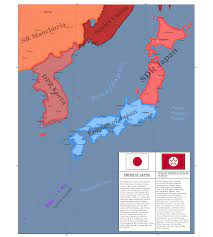What if the soviets won the Cold War: Part one, Final Victory
As an American born after 1991, it is often quite difficult to imagine the Soviet Union and the threat it presented through the western world. Yet, for 72 years, the communists in the east tried desperately for the destruction of western capitalism, democracy, and individualism. For this alternate history, the fork in the timeline will be in 1944, as the war was being turned for the USSR and Ioseph Stalin.
With the influence of stormy weather in the channel, as well as a greater commitment for german spies in American offices and the navy being intercepted in Plymouth, operation overlord was an abject failure, with around 70% of all troops being killed in action. The red army, strengthened after the battles of Kursk and Minsk, faced a severely weakened Wehrmacht, pushing all the way to Berlin by 1945. The Americans, finally succeeding in an invasion of Brittany and securing all of Italy by February 1945, could finally say they contributed to the war effort. With the Palermo conference of April 7-9th of 1945, Stalin, Churchill, and Roosevelt met to discuss a post-war Europe. The proposed new world would divide France in half, as well as proposed communist nations in all lands east of the Rhine except for Greece and Denmark.
Stalin also proposed a "Democratic Overhall" in Spain, Albania, and Turkey, setting their neutrality and housing of Fascistic diplomacy. Roosevelt and Churchill, despite being nervous about this new Europe, did not have the necessary contributions to the war to really complain, and thus the proposal, named "окончательная победа" or total victory was agreed upon, and in January 3rd, 1946, the treaty of Dusseldorf marked the end of the war in Europe.
With the war in the west coming to a standstill, Stalin focused East, with the loss of Okinawa and the near destruction of the Pacific Fleet, Stalin ordered a full assault into Manchuria. On the same fields, Russians had died on just 45 years earlier, Soviet Tanks pushed into the heartland of Manchukuo, knocking Manchucko out of the war, and opening a path to Korea. Sakhalin was secured by March 19th, and Korea by April 21st. MacArthur and Zukhov met to discuss a final end to the war. Using American-controlled ports in Okinawa, and soviet controlled ports in Sakhalin, the armed forces would divide the country. On June 17th, 1946 the landings began; 30,000 casualties were reported on the first day, and by the securing of Osaka and Hiroshima, 860,000 allied troops were dead. With the dropping of the first atomic bomb on Tokyo was done, Japan officially announced unconditional surrender. On May 4th, the treaty of Kyoto led to the end of the Great Patriotic War.
The division of Japan marked the final end of the war. Manchuria, Manchukuo, and the remainder of soviet controlled china would go to the CPC, Korea would be given to the Kim family, and Japan would be split in half, the north being a communist zone with a capital in Kyoto, and the south being a capitalist on with a capital in Hiroshima.


Comments
Post a Comment